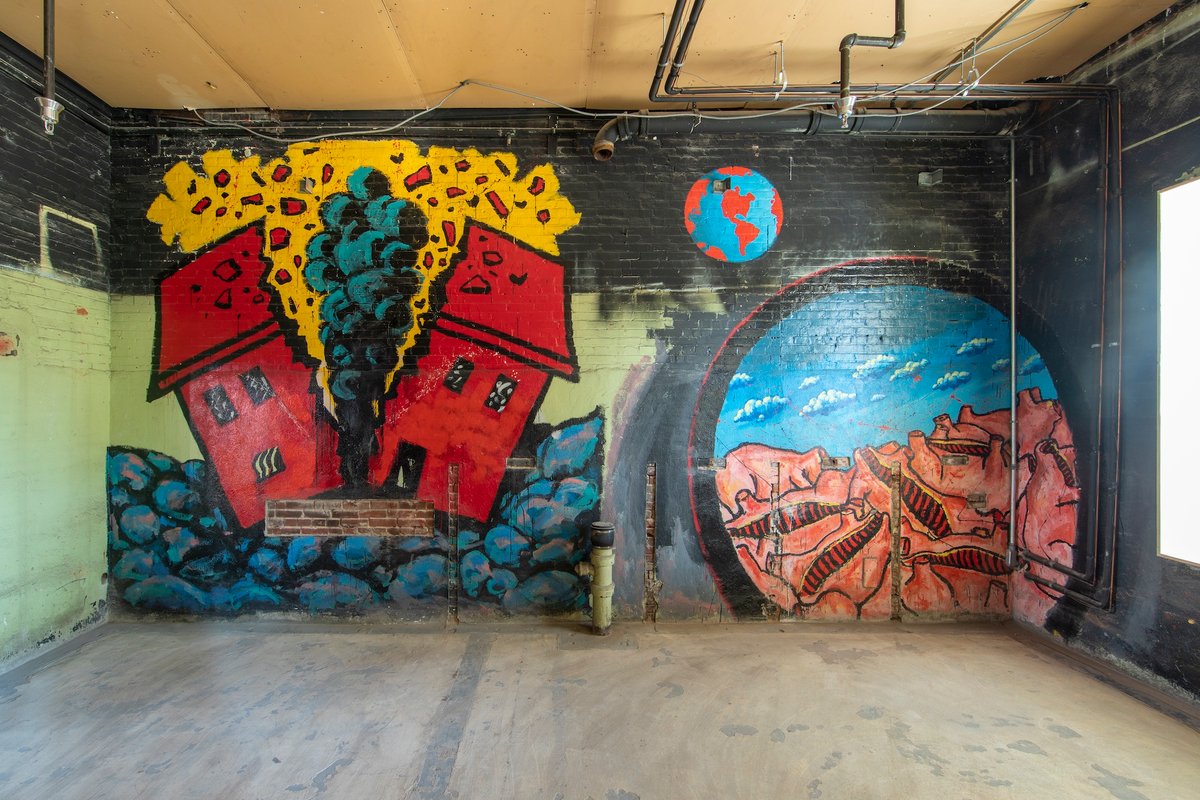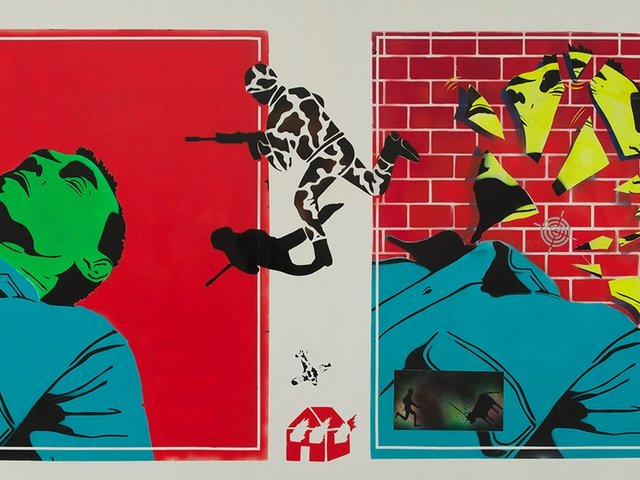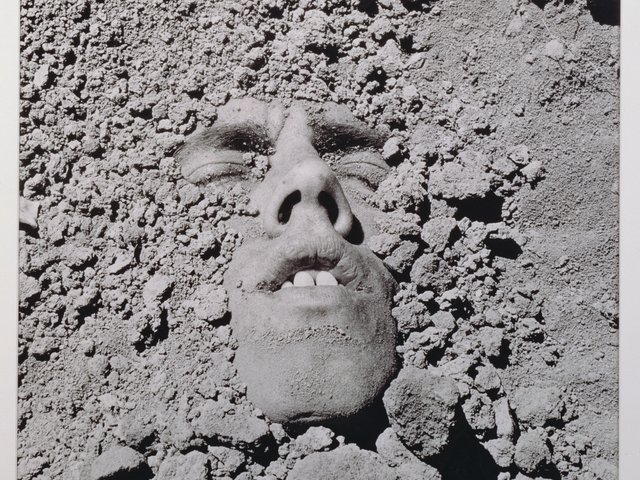A large mural by David Wojnarowicz (1954-92) that was rediscovered in a building in Louisville, Kentucky, in 2022 could be lost again, covered over with drywall. The late artist and activist, whose career has enjoyed a resurgence thanks to the Whitney Museum of American Art’s 2018’s retrospective History Keeps Me Awake At Night, created the site-specific, two-part work in late 1985 as part of the group exhibition The Missing Children Show: Six Artists from the East Village on Main Street. The six-artist show was organised by the local art dealer Potter Coe to raise funds for the Kentucky Child Victims’ Trust Fund.
In 2022, the local architect Moseley Putney was hired to renovate the building where the show had taken place and heard about a mural behind a sheetrock wall. He had actually visited The Missing Children Show and even met Wojnarowicz through his friendship with Coe.
“I remember David’s work was on a brick wall, while most other artists’ were on canvases,” Putney tells The Art Newspaper. Through Coe, he contacted the David Wojnarowicz Foundation’s chair, Anita Vitale.
The building housing Wojnarowicz’s mural, a former lithography factory that had been abandoned by the 1980s, is now being turned into a high-end residential building as part of a complex known as the Billy Goat Strut in Louisville's trendy East Market District. The developers’ current plan is to turn the floor where the mural is located into a waiting room for a boxing gym for residents, with the mural concealed once more behind sheetrock.
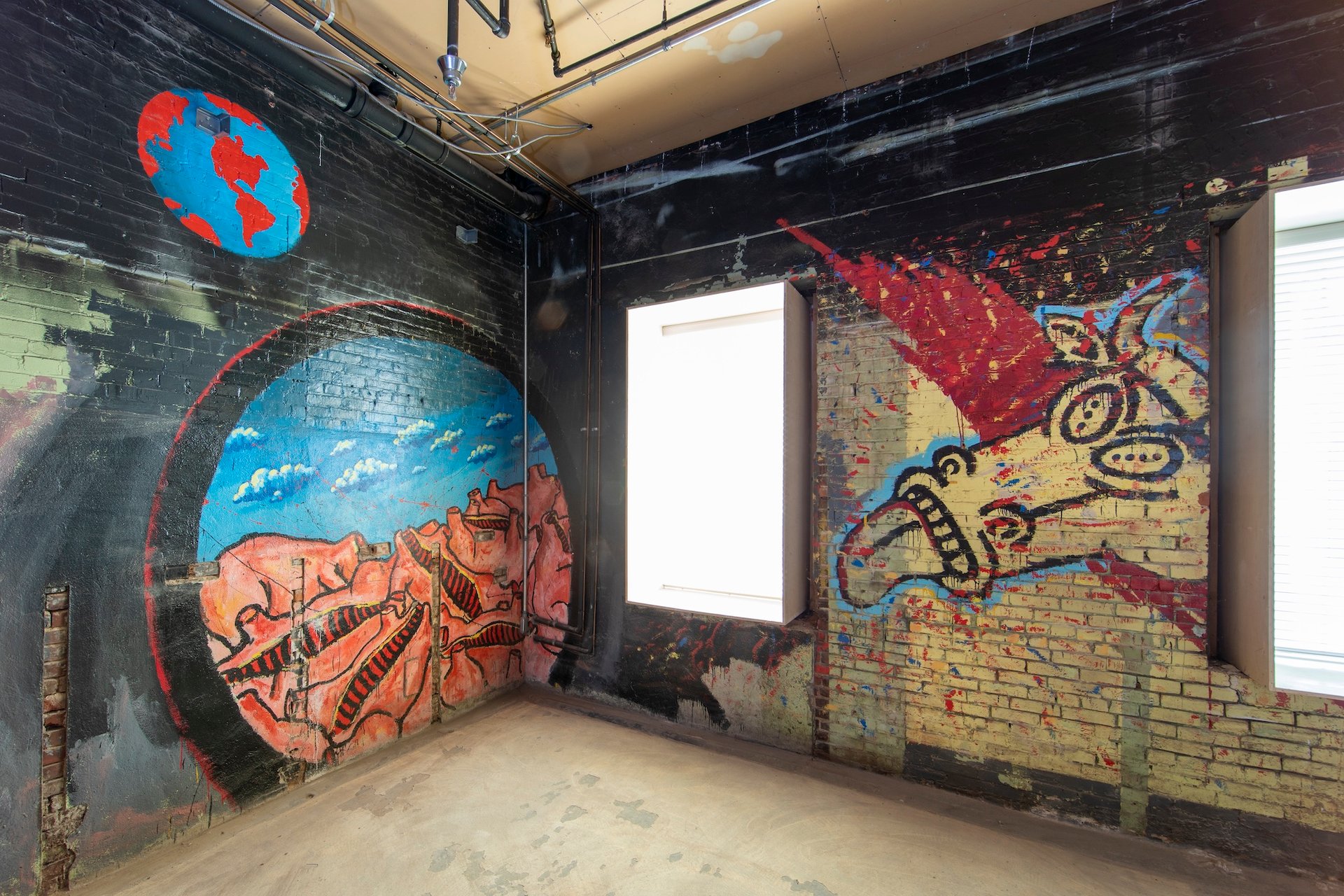
David Wojnarowicz, 'The Missing Children Show' Mural, 1985. Photographer: Mindy Best. © Estate of David Wojnarowicz. Courtesy of the Estate of David Wojnarowicz and PPOW, New York
“We have been guaranteed by the building owners that no damage will happen, but still there won’t be a way for the public to see the work,” says Wendy Olsoff, the co-founder of the New York gallery PPOW, which began representing Wojnarowicz in 1988.
A longtime champion of the artist’s work and legacy, Olsoff is worried about the risk of leaking or cracking while the mural remains behind a sheetrock. The galley and the Wojnarowicz Foundation suggested to the building’s developers that the mural could instead be covered with transparent plexiglass.
Putney eventually left the building project, in part, he says, due to his disagreement with the developers about the mural’s fate. The mural’s removal for conservation is unlikely since it spans two large sections of brick wall, but Putney hopes it can at least be stabilised in situ and made publicly accessible.
“I hope they at least built a stud to make the drywall stand up and not touch the work,” he says. “There is no art gallery in this area, so someone could build a gallery with the mural as part of it.”
From Lower Manhattan to the South
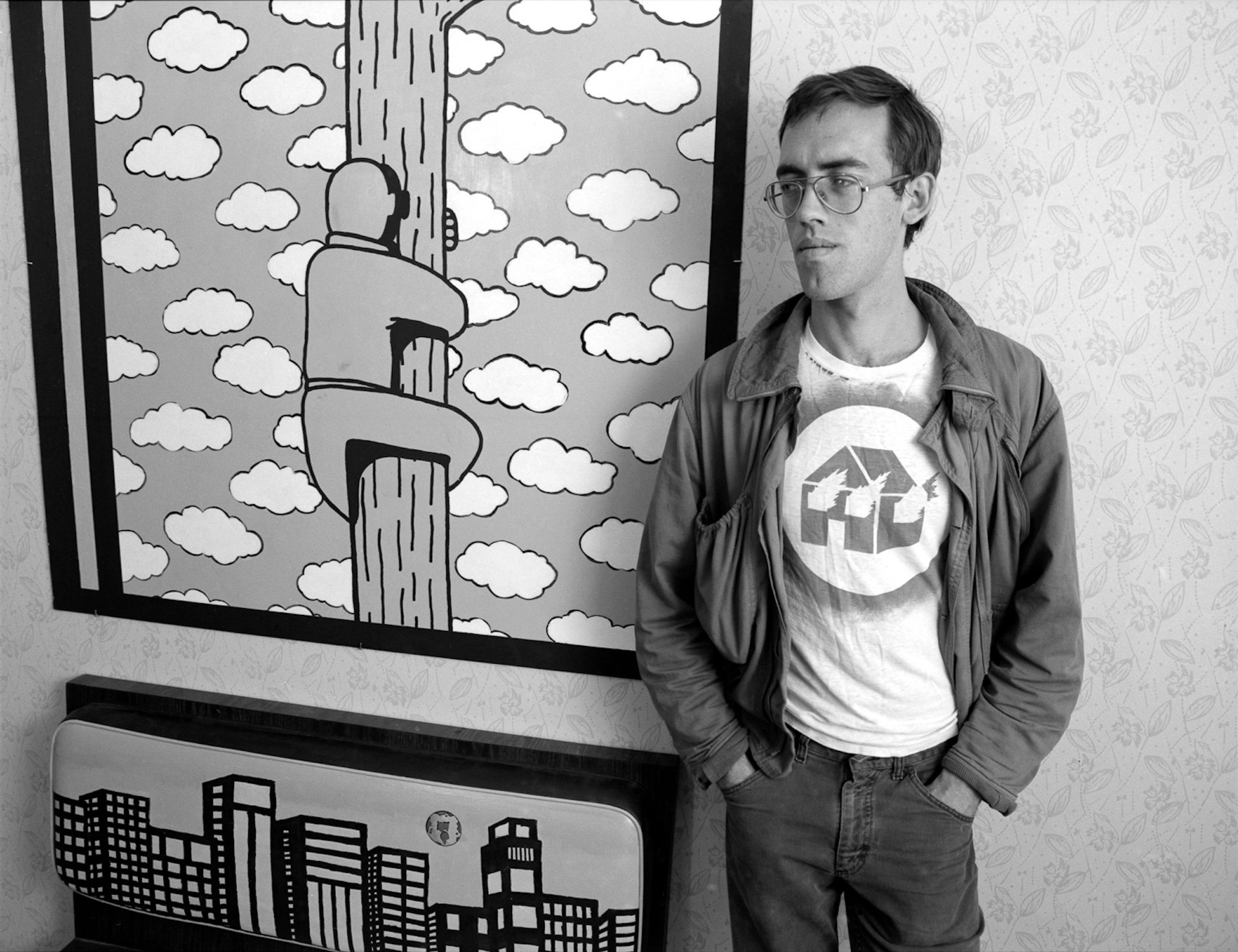
Andreas Sterzing, Untitled, 1983 © Andreas Sterzing. Courtesy of the artist; the Estate of David Wojnarowicz; and PPOW, New York
Wojnarowicz and five other fixtures of the East Village art scene—Judy Glantzman, Futura 2000, Rhonda Zwillinger, Rich Colicchio and Kiely Jenkins—travelled to Louisville and made work in response to the site and subject for The Missing Children Show. Wojnarowicz’s contribution features many of his trademark images, including a cartoonish image of a gagging (or laughing) cow with bulging eyes and a protruding tongue, as well as an exploding red house. The mural also includes a circular portal framing a landscape of piled animal carcasses under a bright blue sky. A globe on which the continents are depicted in red hovers above the grim portal. Wojnarowicz’s original installation had sculptural elements, too, including a teddy bear with an animal skull, a battery, a baseball jacket and a skeleton.
Vitale, who travelled to see the mural in person, hopes to collaborate with the nearby Speed Art Museum and perhaps even partner with the University of Louisville on a celebratory event to mark the 40th anniversary of The Missing Children Show this year. “This is a little piece of Louisville history about people coming together to raise money for missing children,” she says.
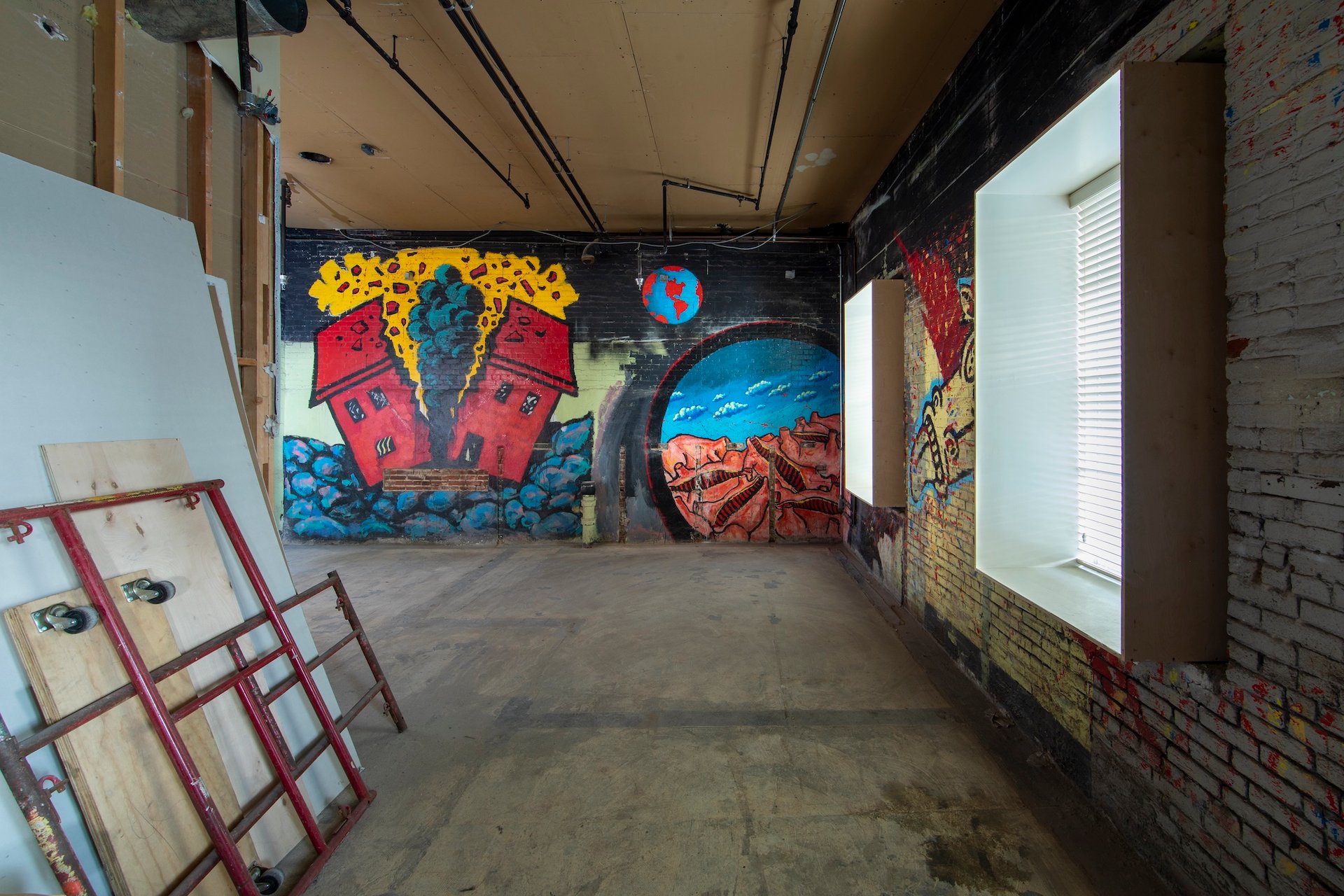
David Wojnarowicz, 'The Missing Children Show' Mural, 1985. Photographer: Mindy Best. © Estate of David Wojnarowicz. Courtesy of the Estate of David Wojnarowicz and PPOW, New York
The mural’s location is particularly poignant given Kentucky’s adoption of laws increasingly hostile to LGBTQ+ people. Wojnarowicz dedicated much of his career to fighting homophobia and racism; he was also a vocal member of the movement to raise awareness of HIV and Aids amid the US government’s apparent indifference to the crisis throughout the 1980s. In the past several years, lawmakers in Kentucky have proposed or passed many laws targeting LGBTQ+ rights, including 17 anti-trans bills.
On 1 October 1, the Leslie Lohman Museum of Art in New York will open an exhibition focused on Wojnarowicz’s Arthur Rimbaud in New York series. The black-and-white photographs document the artist and his friends wearing Xerox-printed masks of the titular French poet’s face in urban settings. The photographs’ backdrops include the subway, Times Square and the West Side piers—including some in which long-lost murals by Wojnarowicz’s can be glimpsed in the backdrop.


